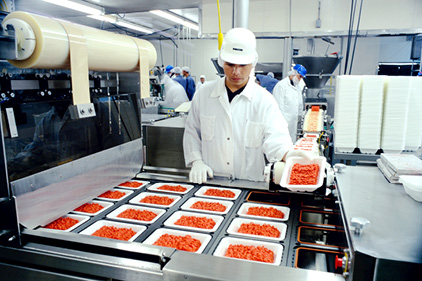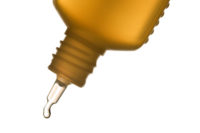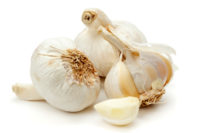
|
In 2010, the U.S. Food and Drug Administration (FDA) reported the recall of more than 500 million shell eggs due to a multistate outbreak of Salmonella Enteritidis, in which over 1,000 people were sick. In September 2011, there was a multistate outbreak of foodborne illness due to Salmonella contamination of ground turkey. This outbreak resulted in the recall of 36 million pounds of turkey, according to the CDC.
The risk of such contamination can be greatly reduced with the proper use of cleaners and antimicrobial agents by both the consumer and the food processor. Antimicrobial agents are essential in maintaining a clean environment in food-processing facilities as they help to mitigate and eliminate the growth of microorganisms such as bacteria, viruses or fungi. With the passing of the Food Safety Modernization Act, and the forecasted increase in FDA inspections, it is important for food processors to understand what products are acceptable for use in their facilities.
Cleaning is the process by which food soils are removed from a surface. There are various types of cleaners that can be used for this purpose. Because of the multitude of soil types within a food facility, multiple types are needed to address the cleaning needs of the facility. General cleaners can be used on all surfaces within the food facility when followed by a potable water rinse. These products are sold as concentrates or ready-to-use. Acid or alkaline cleaners can be used to remove mineral deposits or food soils respectively. Degreasers are used to remove tough greases.
All antimicrobial agents used on surfaces in a food facility must be registered with the U.S. Environmental Protection Agency (EPA) as well as the state in which it will be used. The EPA reviews efficacy and safety data in addition to product labeling to ensure that the product is safe for the intended end use. States further review the products to ensure the labels meet the federal labeling regulations and any additional state requirements. These registrations must be in place before the product can be sold.
Within the antimicrobial class of pesticides there are four primary uses: sanitizers, disinfectants, sterilizers and antiseptics/germicides. When used properly, they can significantly decrease the risk of product contamination within a food facility. To determine their proper use, the instructions on the product labeling should be followed.
Sanitizers are used to decrease the presence of microbes. Sanitizers do not kill all microbes present; instead they reduce the microorganisms to a safe level. Sanitization is the last step in an acceptable food-processing cleaning procedure. Disinfectants are used to kill all microorganisms on a surface with the exception of bacterial spores. Sterilizers(or sporicides) are used to destroy all forms of microbial life including fungi, viruses and all forms of bacteria and their spores. Sterilization is the most powerful process for eliminating microorganisms and is very important for environments where the chance of cross-contamination is high, such as meat and dairy facilities. Antiseptics/germicides are antimicrobial agents used on the skin. Because they are used on humans, these products are regulated by the FDA as over-the-counter drugs.
Cleaning products in use
Cleaning and sanitizing are important steps in food safety. Clean facilities reduce the possibility of contamination during production. Cleaners also fall under the definition of a nonfood compound and include a wide range of product types from hand soaps, to clean-in-place (CIP) cleaners to metal polishes. It is important that the appropriate product be used in any given application to ensure that cross-contamination does not occur.
There are several types of products that should not be used within the production area. These products (e.g. glue removers and solvent cleaners) typically consist of hydrocarbons, chlorinated hydrocarbons or other water-immiscible solvents. There are also cleaners that can be used within a food-processing facility; however, they should not be used on food contact surfaces (e.g., metal polishes).
Cleaners are not allowed to come into direct contact with food. By using cleaning products reviewed by a third party, and food-grade safe, a food facility can eliminate the need for trying to determine which type of cleaners are safe to use in their processing facility.
Product registration
In the United States, food-grade lubricants, water-treatment products and other nonfood products were reviewed previously by the United States Department of Agriculture (USDA). In 1999, NSF International, an independent global public health and safety organization, assumed responsibility for these evaluations and continues to expand that program today. Working in collaboration with the USDA, NSF captured all previous review requirements. Today, NSF’s Registration and Listing Program is a resource recognized worldwide for nonfood compounds. The program is designed to complement the Hazard Analysis and Critical Control Points (HACCP) programs developed by food facilities.
By providing an easy-to-use online list of products registered under the NSF Nonfood Compounds Registration Program, companies can quickly determine if a product is acceptable for use in their processing facility. The registration number assigned to each product allows for straightforward searching and traceability.
The product list, also known as the NSF White Book™, is searchable by various factors such as trade name, company name, NSF Registration number and/or NSF category code. The NSF White Book™ can be reached from the website (www.nsfwhitebook.org). Once a product is found, a copy of the registration letter can be downloaded. The registration letter details what end use the product has been registered for and any limitations associated with its use.








